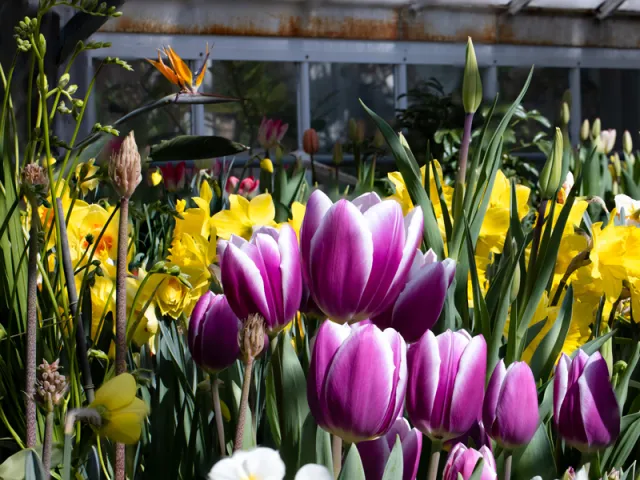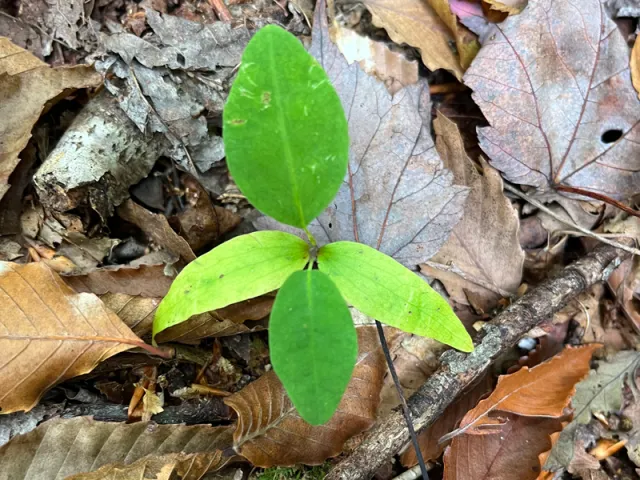Smith Botanic Garden Takes Up Social Justice
Sustainability

Published February 14, 2022
John Berryhill, landscape curator for the Botanic Garden of Smith College, believes botanic gardens are poised to play a critical role in global plant conservation.
“Botanic gardens sit at the intersection of science, public education, research and living collections,” Berryhill says. “No other institutions occupy all of that space.”
From their unique vantage point, botanic gardens can be “powerful actors” for social justice, Berryhill says.
“Our professional field does not currently have the diversity of voices and perspectives it needs to solve the problems it is trying to solve,” he notes. “We’re trying to empower more people to have a voice in addressing complex urgent problems.”
Berryhill will share examples of how Smith’s Botanic Garden is doing just that in a virtual talk on Thursday, March 3, at 4:15 p.m. “Putting Botanic Garden Collections to Work as Tools for Social and Environmental Justice” is the opening lecture for the college’s 2022 Bulb Show, which will run from Monday, March 7, through Friday, March 18.
Details about how to visit the limited access Bulb Show can be found online. This year’s Bulb Show can also be seen virtually via livestream and on social media.

Photograph by Jeff Baker
Here is a preview of some of the ideas that Berryhill will explore in his talk.
How is the role of botanic gardens changing?
“What people want botanic gardens to be is not what they were 100 years ago—a place that mainly collects plants and puts them on display. People want to see botanic gardens going out into living plant communities, understanding the problems that are happening there and doing something to address them. Those are the ideas we’ve been engaging with in our new Collections Management Plan. When you look at what Smith has identified as priorities for its future and you look at strategies for global plant conservation, you see a lot of synergy there on themes like conservation, sustainability and social justice.”
How is Smith’s Botanic Garden addressing those issues?
“We’ve set a lot of new priorities that aim to allow Smith students to bring their full identities and aspirations to the work of meeting environmental and social challenges. We’ve crafted dozens of projects designed to make our collections, interpretation and outreach more inclusive, and will also give students hands-on experience in collaborative conservation work at the local, national and global scale.”
Can you give an example of such a project?
“We’ve just joined a new international program to safeguard rare tree species that can’t be preserved through seedbanking and have to be kept in living collections. These collections are exciting because they’ll essentially function as a firewall against extinction for those trees. So, both our students and our landscape are going to be on the front line of a really important and innovative global conservation effort.

The Magnolia fraseri (or mountain magnolia), pictured here in the Mount Rogers Recreation Area, Virginia, is one of the species that the Botanic Garden will add to Smith's living collection this spring as part of an international effort to conserve the genetic diversity of magnolias. Photograph by John Berryhill
What do you hope will be the main takeaways from your bulb show lecture?
“More than anything I’m hoping that students will be there, and will be able to see themselves in the work that botanic gardens do. The hands of Smith students have helped build our gardens and our Bulb Shows over the years. They have planted the trees, cleaned up the gardens at the end of the season—and they are helping us write these new policies aimed at inclusion, equity and sustainability. Our ultimate goal is to prepare a new generation of leaders who bring new voices to this work.”
Do you have a favorite part of the Smith Bulb Show?
“Ironically, this big explosion of color always reminds me to start looking for my favorite thing about spring, which is the small moments of beauty that come with buds opening. It’s the tiny thing I might not have noticed before that gets me most excited—the maple flower blooming under a leaf. That’s the invitation I want to extend: Come for the tulip flower but stay for the maple flower!”
Photograph by Tim Johnson